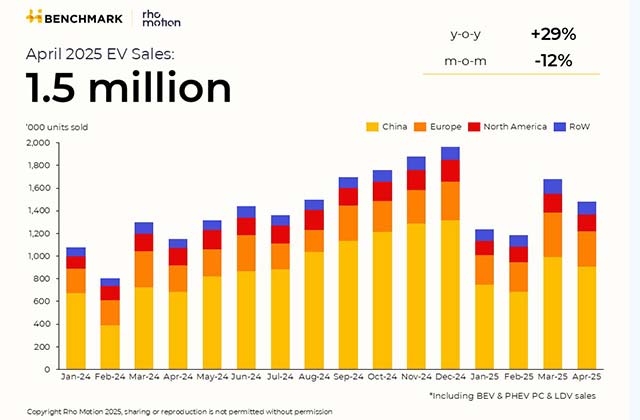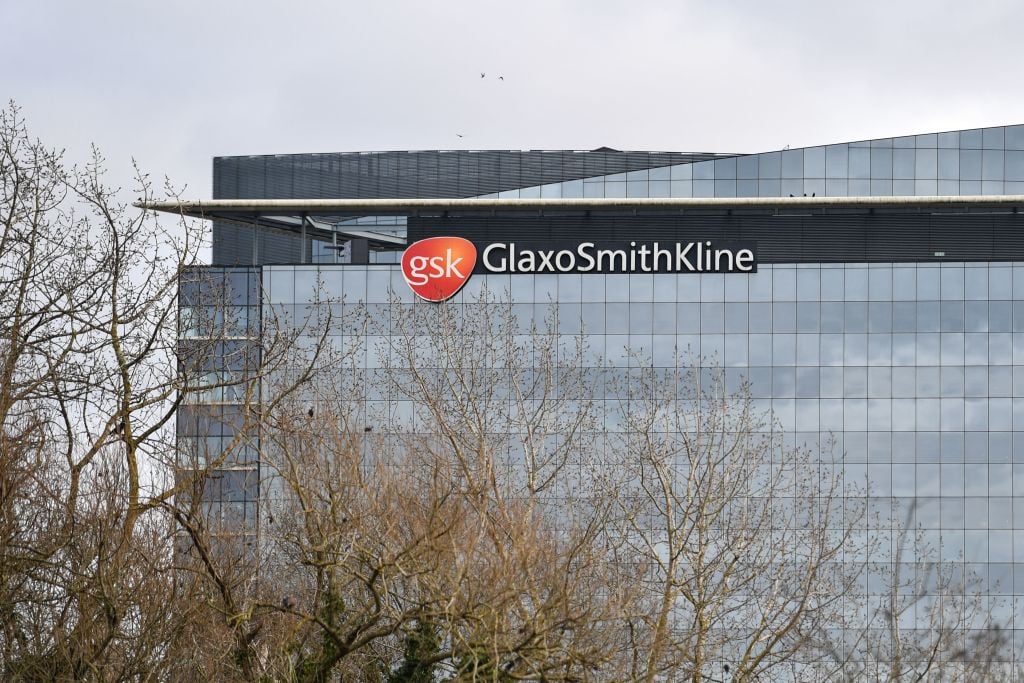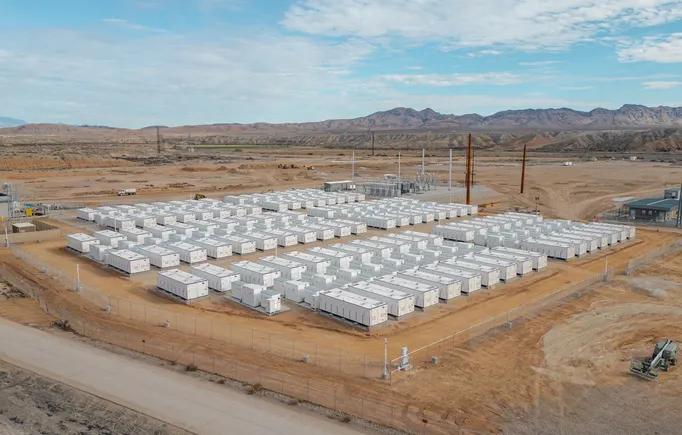Knoxville, Tenn. Tops the “Best Places for Primary Metal Manufacturing Insights Report”
The global trade war underscores urgent need for U.S. industrial transition; the Primary Metals Manufacturing Sector Serves as indicator of economic competitiveness, according to a new report from Global Location Strategies. The post Knoxville, Tenn. Tops the “Best Places for Primary Metal Manufacturing Insights Report” appeared first on Fabricating & Metalworking.

Global Location Strategies (GLS), one of the world’s leading corporate site selection firms, recently unveiled the 2025 edition of its Best Places for Primary Metal Manufacturing Insights Report, an annual study that identifies the top metro areas in the United States for primary metals manufacturing. The report also offers insights into the challenges and opportunities that could trigger U.S. economic growth. The sector encompasses industries engaged in the smelting or refining of metals or alloys with various metal combinations, for the subsequent production of refined metal products and various metal goods.
According to the report, aluminum remains a critical material for the U.S. economy, with growing demand across transportation, packaging, and construction industries, among others. In 2024, U.S. aluminum demand increased by 3.6%, reaching 4.3 million metric tons, while domestic production faced challenges, producing only 670,000 metric tons—just 0.1% of global output. Nearly half of U.S. aluminum consumption relies on imports. Limited domestic capacity and reliance on imports, particularly from Canada, highlight the need for strategic investments to strengthen supply chains. Despite these challenges, secondary aluminum production grew by 5%, showcasing the industry’s potential for innovation and resilience.
“This year’s report highlights the transformative impact of primary metal manufacturing on job creation, infrastructure development, sustainability, and overall economic competitiveness,” said Didi Caldwell, President and CEO, Global Location Strategies. “By identifying optimal locations, we provide decision-makers with the insights needed to drive long-term success and build a legacy of sustainable growth. On a broader scale, there is a meaningful need to expand domestic metals manufacturing in order to become more self-reliant, particularly as it relates to supplying the raw materials that are essential to key industries, including construction, automotive, and energy.”
The U.S. primary metals industry is undergoing significant transformation, shaped by long-term structural challenges, global competition, and evolving market demands. Employment in the sector has steadily declined over the past few decades, with primary metal manufacturing losing 20% of its workforce since 2000—double the rate of job losses in the broader manufacturing sector.
Labor productivity in the sector has also faced setbacks, and tariffs have reshaped the competitive landscape, creating opportunities for domestic growth while introducing new challenges for global trade relations.
Despite these hurdles, alumina and aluminum production saw significant growth, with 12 projects announced—up from just 3 the previous year—while steel products manufacturing remained the most active sub-sector. These investments signal optimism for the future, as modernization and capacity expansion become critical to meeting rising demand and ensuring long-term competitiveness.
Report findings show that well-crafted federal programs have had a net-positive result on domestic metals manufacturing. The Bipartisan Infrastructure Investment and Jobs Act continues to infuse new vitality into infrastructure development. This boost is further reinforced by provisions like the Build America, Buy America Act, which mandates that all iron, steel, manufactured products, and construction materials used in federally funded infrastructure projects must originate from the United States. Additionally, current strategic U.S. tariff initiatives and existing initiatives such as the Inflation Reduction Act (IRA) and the Creating Helpful Incentives to Produce Semiconductors and Science Act (CHIPS Act) have enticed global manufacturers to invest in the United States.
Industry Highlights
The report sheds light on the dynamic growth of the U.S. metals manufacturing industry, driven by significant trends:
- Increased Capital Investments: In 2024, U.S. primary metal manufacturing projects announced $4.7 billion across 42 projects, totaling 5,400+ jobs.
- Tariff Protections: The March 2025 tariffs on steel and aluminum imports seek to boost domestic production and capacity utilization by countering global excess supply and unfair trade, driving growth in U.S. metals manufacturing while reshaping supply chains, although their true impact remains unclear.
- Steel Product Manufacturing Recovery: Steel product manufacturing has shown the strongest recovery among primary metal manufacturing sub-sectors since the pandemic, with employment levels now 1% above pre-pandemic levels.
Competition From China
China has emerged as the dominant global force in primary metal production, accounting for approximately 60% of global aluminum output and over 50% of global steel production. A combination of subsidized electricity rates, aggressive government programs, and strategic priorities focused on market share have enabled Chinese metal products to enter global markets at prices below the production costs faced by U.S. manufacturers, making it difficult for domestic producers to compete.
The Impact of Tariffs: Good For Some, Not For Others
In March 2025, the United States re-imposed broad tariffs on steel and aluminum imports, setting a 25% duty on these metals and their derivatives. This policy eliminated all country exemptions that had been in place since 2018, affecting key suppliers like Canada, Mexico, the European Union, South Korea, and others.
While the immediate economic impacts are largely positive for domestic steelmakers and smelters, they have driven up the cost of steel for domestic industries that rely on it, such as construction, automotive, manufacturing, and energy. As a result, downstream industries face higher costs, thinner margins, and a potential loss of market competitiveness. The new tariffs will likely lead to companies restarting idled metals production capacity or expanding production lines, which would require hiring additional workers, but will take time.
“Bringing new metals processing facilities online is not an overnight process,” said Caldwell. “These projects typically require three to five years to become operational, factoring in lengthy construction and permitting timelines. Added to this is the current uncertainty around electricity availability in the U.S.. These and other challenges will hinder the sector’s efforts to meet rising demand within the expected timelines. In the meantime, domestic consumers of metals products will likely have to rely on imported supplies.”
Ranking the Best Metro Areas
GLS’s ranking methodology incorporates quality scores based on more than 120 criteria, including workforce, infrastructure, community well-being, and location-dependent operating costs across 387 metro regions. This comprehensive analysis highlights metro areas best positioned to support the metals industry’s growth. The full methodology is incorporated within the report.
While metros that rank well in this year’s report are best-positioned to support the critical investments of primary metal manufacturing operations, the report does not consider availability of suitable real estate, which GLS analyzes on a project-by-project basis.
Top 5 metro areas for primary metal manufacturing:
- Knoxville, TN (ranked #1, no change from 2024)
- Huntsville, AL (ranked #2, no change from 2024)
- Chattanooga, TN-GA (ranked #3, no change from 2024)
- Toledo, OH (ranked #4, up from #14 in 2024)
- Nashville-Davidson–Murfreesboro–Franklin, TN (ranked #5, no change from 2024)
New entrants to the 2025 Top-10 list include:
- Fort Wayne, IN (ranked #6, up from #17 in 2024)
- Clarksville, TN-KY (ranked #7, up from #39 in 2024)
- Savannah, GA (tied for #8, up from #20 in 2024)
- Atlanta-Sandy Springs-Roswell, GA (tied for #8, up from #18 in 2024)
These rankings offer valuable insights into emerging trends and regional dynamics reshaping the metals industry. The top regions are geographically concentrated in the following regions, which offer an attractive balance of cost and quality:
- East South Central (Alabama, Kentucky, Mississippi, Tennessee)
- South Atlantic (Delaware, Florida, Georgia, Maryland, North Carolina, South Carolina, Virginia, West Virginia)
- East North Central (Illinois, Indiana, Michigan, Ohio, Wisconsin)
The report also provides compelling data that underscores the challenges and opportunities within primary metal manufacturing:
- Decline in Primary Metals Employment: U.S. primary metal manufacturing employment has steadily declined over the decades, driven by automation, globalization, and cost structures. Labor shortages remain persistent despite highly competitive wages; the average annual worker wage for iron and steel mills and ferroalloy manufacturing is between $88,143–$112,285, notably higher than general manufacturing jobs.
- Structural Challenges: The industry faces aging infrastructure and outdated technology, high energy costs, labor shortages, and global competition, particularly from countries like China with modernized facilities and subsidized production costs.
- Growth in Aluminum Production: Alumina and aluminum production saw a 2.6% employment growth over the last decade, reflecting its increasing importance in industries like transportation and packaging.
- Environmental Progress: The primary metals sector reduced managed waste by 27% between 2013 and 2022, demonstrating measurable environmental progress amid the challenges of compliance with stringent regulations.
Combining data-driven insights with site selection expertise, the GLS Insights Report underscores the significant impact of location decisions on business success, employees, and communities, aiming to guide companies in building a lasting legacy.
For more information or to access the full report, visit Global Location Strategies at https://globallocationstrategies.com/insights/#reports.
www.globallocationstrategies.com
The post Knoxville, Tenn. Tops the “Best Places for Primary Metal Manufacturing Insights Report” appeared first on Fabricating & Metalworking.
























































































































































